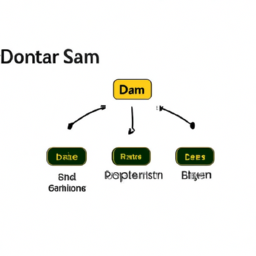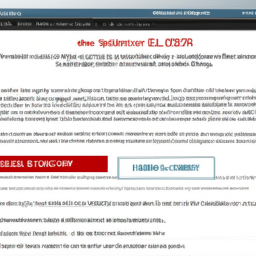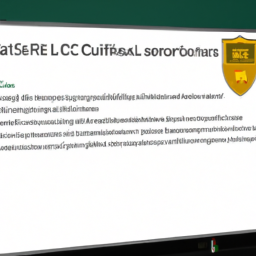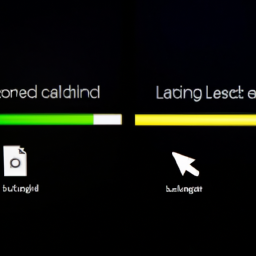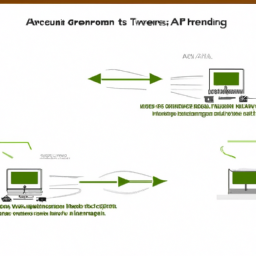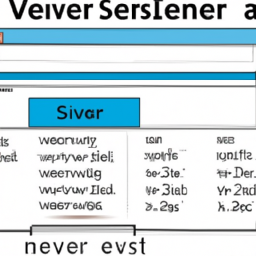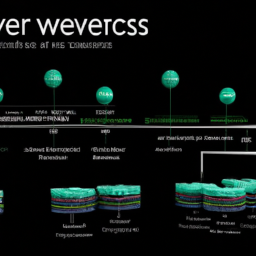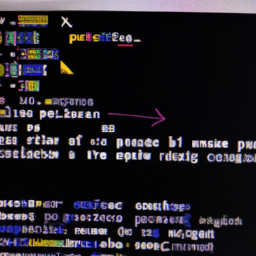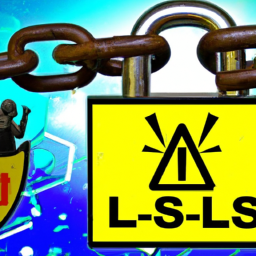Have you ever sent an important email only to find out it never reached its intended recipient? Frustrating, right? Well, imagine your email as a package being delivered to a friend’s house. But instead of dropping it off directly, the delivery person has to go through a series of checkpoints before reaching the destination. This process is similar to DNS propagation and its effects on email delivery.
DNS propagation refers to the time it takes for changes made to your domain’s DNS records to be recognized and implemented across the internet. During this propagation period, emails may not be delivered or may end up in the spam folder. Understanding how DNS propagation affects email delivery is crucial for ensuring your messages reach the inbox.
In this article, we will dive into the basics of DNS propagation, explore how it impacts email delivery, and discuss the factors that influence propagation time. We will also provide you with best practices for dealing with DNS propagation issues and introduce useful tools and resources to check propagation status.
Get ready to demystify DNS propagation and take control of your email delivery!
Key Takeaways
- DNS propagation refers to the time it takes for changes made to a domain’s DNS records to be recognized and implemented across the internet.
- Delay in email delivery can occur due to the time it takes for DNS changes to propagate.
- Factors such as common DNS propagation errors, TTL, DNS caching, and ISP configurations can influence DNS propagation time.
- Lowering the TTL value of DNS records and using multiple DNS servers can help minimize DNS propagation time.
The Basics of DNS Propagation
So, you’re probably wondering, what’s the deal with DNS propagation and why should you care?
Well, when it comes to launching a website, DNS propagation is incredibly important. It refers to the time it takes for DNS changes to be recognized and updated across the internet. During this period, your website may be inaccessible or experience inconsistencies.
One common misconception about DNS propagation is that it only affects the website itself. However, it also has a significant impact on email delivery. DNS records, such as MX records, play a crucial role in directing emails to the correct mail servers. If these records are not updated properly or if they are still propagating, it can result in delays or even failed email delivery.
Understanding how DNS propagation affects email delivery is crucial to ensure smooth communication and avoid any disruptions.
Now, let’s dive into the specifics of this topic.
How DNS Propagation Affects Email Delivery
When it comes to DNS propagation and email delivery, there are two key points you need to be aware of. First, there can be a delay in email delivery due to the time it takes for DNS changes to propagate across the internet. This means that it may take some time for your emails to reach their intended recipients.
Second, DNS propagation can also affect the deliverability of your emails, with some of them ending up in the spam or junk folders of the recipients. This can happen if the DNS changes are not properly configured or if your email server’s reputation is not good.
It’s important to keep these factors in mind and take the necessary steps to ensure smooth email delivery.
Delay in Email Delivery
Despite the delay in email delivery, it’s crucial to understand the impact of DNS propagation on the timely arrival of messages. DNS propagation can cause temporary delays in email delivery, but by troubleshooting email delays, you can minimize the impact.
Here are four key challenges to consider:
-
DNS propagation time: During DNS propagation, changes made to DNS records can take time to propagate globally, resulting in delays in email delivery.
-
Time-to-live (TTL): TTL is a value set on DNS records that determines how long other DNS servers cache the information. Longer TTLs can lead to longer delays in email delivery.
-
DNS caching: DNS servers often cache DNS records to reduce network traffic. If a DNS server has outdated records, it can cause email delivery delays.
-
Network congestion: High network traffic or congestion can slow down DNS queries, resulting in delayed email delivery.
Understanding these challenges helps in troubleshooting email delays effectively.
Now, let’s explore the next section about emails going to spam or junk folders, where we’ll delve deeper into preventing this issue.
Emails Going to Spam or Junk Folders
Emails can sometimes take a detour to the dreaded spam or junk folders, like a lost letter wandering through a maze of filters and algorithms. This issue of email deliverability can be frustrating, especially when important messages end up in the wrong place.
The main reason for emails going to spam or junk folders is the presence of spam filters. These filters are designed to identify and block unsolicited or suspicious emails, protecting users from potential threats. They analyze various elements of an email, such as sender reputation, email content, and formatting. If any of these elements trigger the spam filters, the email is flagged as spam and redirected accordingly.
To improve email deliverability and prevent emails from going to spam, it’s crucial to follow best practices for email marketing. This includes maintaining a good sender reputation, using authentic and relevant content, and avoiding spammy tactics. Understanding how spam filters work is essential in ensuring your emails reach the intended recipients.
Transitioning to the next section, let’s now explore the factors that influence DNS propagation time.
Factors That Influence DNS Propagation Time
To understand factors that influence DNS propagation time, imagine yourself watching a digital clock ticking slowly as various elements affect the speed at which DNS changes are spread across the internet.
Here are four key factors that can influence DNS propagation time:
-
Common DNS propagation errors: Incorrectly configured DNS records, improper TTL values, and missing glue records can lead to delays in DNS propagation.
-
TTL (Time to Live): The TTL value set for DNS records determines how long they can be cached by DNS resolvers. Shorter TTL values result in faster propagation.
-
DNS caching: DNS resolvers cache DNS records to reduce load and improve performance. However, cached records can cause delays in propagating changes.
-
ISP configurations: Different Internet Service Providers may have varying DNS caching policies and configurations, which can impact DNS propagation time.
Understanding these factors can help you minimize DNS propagation time and ensure quicker delivery of your emails.
Now let’s explore best practices for dealing with DNS propagation issues.
Best Practices for Dealing with DNS Propagation Issues
A key strategy for handling DNS propagation issues is to stay patient and wait for the clock to tick at its own leisurely pace. However, there are also some DNS propagation troubleshooting techniques that you can employ to minimize email delivery disruptions during this time.
One effective technique is to lower the Time To Live (TTL) value of your DNS records, which reduces the amount of time it takes for the changes to propagate.
Another strategy is to use multiple DNS servers from different geographic locations to ensure that your DNS changes are distributed more quickly.
Additionally, you can monitor the progress of DNS propagation using online tools and resources that provide real-time updates on the status of your DNS changes.
By employing these strategies, you can navigate through the challenges of DNS propagation and ensure smooth email delivery without experiencing significant disruptions. Moving on to tools and resources to check DNS propagation…
Tools and Resources to Check DNS Propagation
Check out these amazing tools and resources that’ll help you stay on top of DNS propagation and ensure your changes are taking effect smoothly and swiftly!
-
DNS Propagation Checker: This tool allows you to check the status of your DNS propagation across multiple DNS servers worldwide. It provides real-time updates on the progress of your changes.
-
DNS Lookup Tools: These tools help you perform various DNS lookups, such as finding the IP address associated with a domain name or checking the DNS records for a specific domain. They provide valuable information for troubleshooting DNS propagation errors.
-
Email Deliverability Testing Tools: These tools simulate email delivery to various mail servers and provide insights into how your DNS settings affect email deliverability. They help optimize DNS propagation for faster email delivery.
-
DNS Propagation Monitoring Services: These services continuously monitor DNS propagation for your domain and notify you when changes are fully propagated. They ensure that you’re aware of any issues and can take appropriate action.
-
Online Forums and Communities: Engaging with online forums and communities dedicated to DNS and email delivery can provide valuable insights and support for troubleshooting DNS propagation errors. You can learn from others’ experiences and get expert advice.
Frequently Asked Questions
How can I speed up the DNS propagation process for my domain?
To speed up DNS propagation for your domain, there are a few best practices you can follow.
First, you can lower the TTL (Time to Live) value of your DNS records to a shorter time, like 5 minutes. This will allow changes to propagate faster.
Additionally, you can use a DNS management tool to monitor the propagation progress.
Lastly, consider using a DNS provider with a global network of servers to ensure faster propagation worldwide.
These practices will help expedite the process and minimize any delays.
Can DNS propagation affect the deliverability of my email campaigns?
DNS propagation can indeed affect the deliverability of your email campaigns. When DNS records are updated, it takes time for these changes to propagate across the internet. During this propagation period, some DNS servers may still be using the old records, leading to email delivery issues.
Additionally, DNS caching plays a crucial role in email delivery. ISPs often cache DNS records to reduce their server load, but this can result in delayed email delivery if the cache is not refreshed frequently.
Is there a way to check the progress of DNS propagation for my domain?
To check the progress of DNS propagation for your domain, you can use online tools that act as a pair of binoculars, helping you see through the fog. These tools allow you to enter your domain name and check if the changes you’ve made to your DNS records have propagated across the internet.
If you’re troubleshooting issues with email delivery, monitoring the DNS propagation will give you insights into whether the changes are taking effect or if further action is needed.
Are there any specific DNS record settings that can impact email delivery?
Yes, there are specific DNS record settings that can impact email delivery. DNS record settings like MX (Mail Exchanger) records and SPF (Sender Policy Framework) records play a crucial role in ensuring that emails are delivered properly.
MX records specify the mail server responsible for receiving emails for a domain, while SPF records authenticate the sending servers.
Proper configuration of these DNS record settings is essential to avoid DNS propagation challenges and ensure smooth email delivery.
What should I do if I experience email delivery issues during the DNS propagation period?
If you’re experiencing email delivery issues during the DNS propagation period, there are a few common causes that you can troubleshoot. First, check if the DNS records for your email server are properly set up. Make sure the MX record is pointing to the correct email server.
Additionally, check if your email server is configured correctly and if there are any issues with the email sending or receiving settings.
Finally, consider reaching out to your DNS provider or IT support for further assistance.
Conclusion
In conclusion, understanding DNS propagation and its effects on email delivery is vital for ensuring smooth communication.
By grasping the basics of DNS propagation and how it impacts email delivery, individuals can take appropriate measures to mitigate any potential issues.
Factors such as TTL, DNS caching, and network latency influence the propagation time, but following best practices can help alleviate any delays.
Utilizing tools and resources to check DNS propagation will provide real-time information, allowing users to stay informed and troubleshoot effectively.
So, stay vigilant and stay connected!







